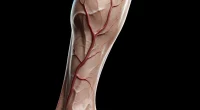Vaginal cancer
What is vaginal cancer?
Vaginal cancer is a cancerous disease in which a malignant tumor affects the walls of the vagina. Vaginal cancer is a rare type of cancer that forms in the vaginal tissues, often presenting unique challenges in diagnosis and treatment. Although it accounts for a small percentage of gynecologic cancers, its impact on patients can be significant. This comprehensive article aims to explore vaginal cancer in-depth, including its types, causes, symptoms, diagnostic procedures, treatment options, and recovery.
Primary vaginal cancer is considered a rare disease. The frequency of development of this pathology does not exceed 2% in the structure of all oncologic processes of the female genital organs. Metastatic lesions are detected more often. Malignant cells get into the walls of the vagina by lymphogenic pathways from other organs. Vaginal tumors are diagnosed mainly in women over 50 years of age.
Malignant neoplasms of the vagina are more often caused by transformation of squamous epithelial cells (squamous cell cancer). Less often – glandular cells (adenocarcinoma).
Cancerous tumors of the vagina develop sequentially from a focus of dysplasia to a preinvasive and then invasive form. From the first to the second stage, it may take 10-15 years. Therefore, the main task is to diagnose the disease in the early stages of development. Timely and proper treatment contributes to the full recovery of the patient.
Epidemiology
Vaginal cancer is relatively rare, with its incidence being significantly lower than other gynecological cancers like ovarian or cervical cancer.
Types of vaginal cancer
Vaginal cancer develops in several stages:
- Zero – changes affect only the epithelial layer of the wall.
- The first is an invasive tumor up to 2 cm in diameter that has spread beyond the basal lamina of the epithelium.
- The second is a tumor larger than 2 cm in diameter, infiltrating the paravaginal tissues.
- Third – the pelvic walls are involved in the malignant process.
- Fourth – at substage A, surrounding organs (urethra, bladder, and rectum) and regional lymph nodes are involved. Substage B is characterized by the appearance of metastases in distant organs.
Symptoms
Preinvasive vaginal cancer is usually asymptomatic. The tumor sprouting into deeper layers of the wall is accompanied by mild manifestations typical of other diseases of the genital organs. A woman may be bothered by discomfort, itching, discharge, etc.
Damage to blood vessels is accompanied by spurting or bloody discharge. At first, they appear after sexual contact or hygienic procedures; later, they appear spontaneously, after stress or physical exertion. At later stages, pathological discharge is observed not only from the genital tract but also from the urethra or rectum. Necrotic processes provoke purulent discharge with an unpleasant odor.
As the surrounding tissues become involved, there is pain in the perineum and perineal region. When other organs are affected, there is pain during urination and defecation, tenesmus, constipation, etc.
Reasons
The exact causes of malignant vaginal tumors are unknown. Potentially, the disease can be triggered by:
- Hyperplastic processes that develop due to infection with highly oncogenic strains of human papillomavirus (HPV 16, 18, etc.);
- radiation exposure from radiation therapy for other forms of cancer;
- metastasis of tumors of other localizations;
- chronic inflammatory changes in the vagina;
- dystrophic processes.
Menopause, endocrine disorders, pelvic surgery, vaginal endometriosis, endocrine diseases, immune disorders, and unfavorable heredity are considered predisposing factors.
Diagnosis
Cancer is suspected when a submucosal infiltration, ulcer, or papillary growth is found on the vaginal wall. The doctor examines the formation visually and, with the use of a colposcope, takes smears for cytological analysis, or performs a biopsy (taking a fragment of tissue for histological examination). The patient is prescribed a general blood test and tests for oncomarkers.
When cancer is confirmed, a comprehensive diagnosis is carried out to assess the extent of the tumor and detect metastases. For this purpose, radiography, ultrasound, MRI, CT, and endoscopic studies are prescribed. The scope of examination is determined individually, considering the history, complaints, and stage of tumor development.
Vaginal cancer treatment
Treatment tactics are personalized for each patient. Oncologists consider the woman’s age, general condition of the organism, reproductive plans, stage of disease development, degree of tumor invasion, and presence of metastases. In most cases, complex treatment is carried out with the use of surgical methods, chemo- and radiation therapy.
Conservative treatment
Conservative methods are most often complementary to the surgical treatment of cancer. Such therapy is prescribed before surgery (to reduce the size of the tumor) or after the intervention (to destroy residual atypical cells). Chemotherapy is most often carried out after surgical treatment and involves the application of topical agents.
Radiotherapy is used when the effectiveness of chemotherapy medication is insufficient when there is a high risk of malignant cells penetrating the surrounding structures, as well as in the treatment of inoperable cancer. Intravaginal, intrathecal, or remote irradiation is performed.
Photodynamic therapy is used in the complex treatment of preinvasive forms of cancer to increase the effectiveness of minimally traumatic surgeries.
Surgical treatment
Surgical methods are the front line of treatment for vaginal cancer. Superficial tumors are removed gently. The affected areas are excised within healthy tissue.
Invasive tumors of small size require removal of part of the vagina. In some cases, removal of the uterus, appendages, and regional lymph nodes is considered.
For advanced cancer, the possibility of surgery is considered individually.
All these treatment options are available in more than 900 hospitals worldwide (https://doctor.global/results/diseases/vaginal-cancer). For example , vaginectomy can be done in 25 clinics across Turkey for an approximate price of $2.7 K (https://doctor.global/results/asia/turkey/all-cities/all-specializations/procedures/vaginectomy).
Prevention
Prevention of vaginal cancer involves preventive examinations, medical help in case of complaints, as well as proper and complete treatment of infectious and inflammatory diseases of the female genital organs. Prevention of oncologic pathologies, in general, involves avoidance of bad habits, rational nutrition, active lifestyle, and avoidance of contact with potentially carcinogenic substances.
Rehabilitation after surgical treatment
The volume of intervention determines the peculiarities of the recovery period. After minimally invasive surgeries, it is usually required to limit physical and sexual activity, carefully observe the rules of personal hygiene, and refuse heat procedures, hot bathtubs, swimming pools, or open water.
Living with Vaginal Cancer
Living with vaginal cancer requires ongoing care:
- Regular follow-up visits to monitor for recurrence.
- Rehabilitation services, including sexual health counseling.
- Lifestyle adjustments to manage symptoms and improve overall health.
Conclusion
Vaginal cancer, though rare, requires a comprehensive approach for effective management. Early detection and advanced treatment methods have improved outcomes and quality of life for many patients. Continued research and advancements in medical treatments offer hope for even more effective therapies in the future.




